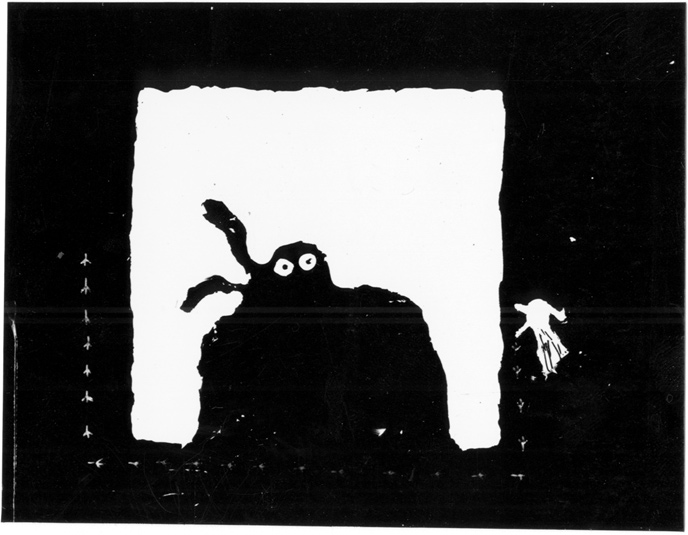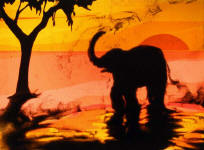 Sand animation has almost become a household word ever since Kseniya Simonova's winning performance hit the million view mark on Youtube. It is a riveting performance, set to epic music, telling a culturally charged story through the progressive live transformation of sand on a light table. I think a great part of the appeal is watching this beautiful, stoic young woman passionately throwing sand on the surface by the handful and making grand sweeping gestures that transform abstract shapes into something remarkably recognizable. We are watching an artist at work, and get a glimpse into the mystery of something we could never conceive of doing ourselves.
Sand animation has almost become a household word ever since Kseniya Simonova's winning performance hit the million view mark on Youtube. It is a riveting performance, set to epic music, telling a culturally charged story through the progressive live transformation of sand on a light table. I think a great part of the appeal is watching this beautiful, stoic young woman passionately throwing sand on the surface by the handful and making grand sweeping gestures that transform abstract shapes into something remarkably recognizable. We are watching an artist at work, and get a glimpse into the mystery of something we could never conceive of doing ourselves.But is it sand animation? I suppose if we take the root definition of animation as "breathing life into something" we could argue that Simonova is bringing the sand to some semi-lifelike state of being through her careful movements. There is, certainly some spark of life in a Vermeer painting or a Michelangelo sculpture, so why not a sand painting? But epic music and sweeping gestures aside, when I look at those drawings my first thought is, "Wow, that would be really cool if it started moving!" Animation is the frame-by-frame infusion of life into anything (drawings, clay, objects and, yes, even sand) resulting in something seemingly independent of its creator. Simonova's creations are never detached from her. They are dependent on her presence for their transformative life, whereas a true sand animation can life and act effectively without the audience having any awareness of the animator. So, as an animator, and specifically one who has worked in sand, I take issue with the term animation being applied to Simonova's (and other less famous sand artists') admirable but static performance art.

So, to set the record straight, I offer up a few sand animations which effectively use the medium of sand to create vibrant, memorable films.
Of all sand animators, Caroline Leaf is probably the most well-known. Her 1974 adaptation of the Inuit legend "The Owl Who Married a Goose" might be the definitive black and white sand animation. Leaf's seamless switching between of positive and negative space and fluid transformations emphasize the strengths of sand as an animation medium.
 Another classic that you will be hard pressed to find is Bitzbutz by Gil Alkabetz of Israel. Actually, I think he may have used salt instead of sand, but it's the same concept. Good luck trying to get a copy of this one. Thank goodness for youtube, which lets us all enjoy these films!
Another classic that you will be hard pressed to find is Bitzbutz by Gil Alkabetz of Israel. Actually, I think he may have used salt instead of sand, but it's the same concept. Good luck trying to get a copy of this one. Thank goodness for youtube, which lets us all enjoy these films! And finally, and most humbly, I offer up Tracks, a sand animation by yours truly. While most sand animation is black and white, I introduced color into the background by using collages made from theater gels which kept the brightness of the pure light behind the silhoueteted sand while adding the vibrancy of color.
And finally, and most humbly, I offer up Tracks, a sand animation by yours truly. While most sand animation is black and white, I introduced color into the background by using collages made from theater gels which kept the brightness of the pure light behind the silhoueteted sand while adding the vibrancy of color.

